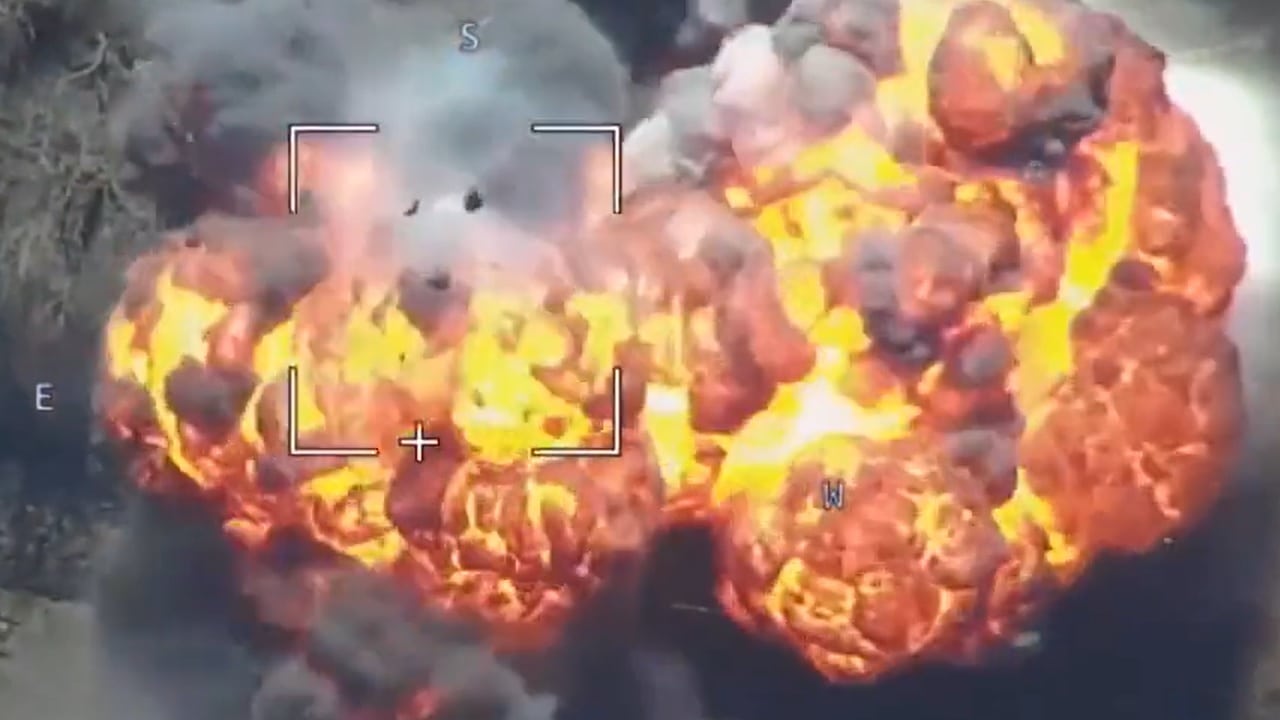The Ukrainian forces have struck deep behind Russian lines once again. On Saturday, a video showed a Ukrainian loitering munition striking a large Russian military oil refinery and fuel depot at Kozacha Bay, north of Sevastopol in the Crimean Peninsula.
The Russian fuel complex has suffered significant damage.
Kamikaze Drone Strike
According to Russian officials, four Ukrainian drones attacked the large oil refinery and fuel depot complex. Two managed to get through and strike the complex, while one was shot down and the other one neutralized with electronic warfare means.
With more than 25 large fuel tanks, this is truly a large oil refinery and fuel depot. Russian officials stated that the attack destroyed four fuel tanks but that the open blaze had been contained.
Video footage from the area shows a huge cloud of smoke above the oil refinery and fuel depot, which is still on fire. The column of black smoke can be seen from miles away.
This is the second drone strike against Russian positions in occupied Crimea in the past week. A few days ago, the Ukrainians targeted Russian Navy ships in the port of Sevastopol.
The Drone Strike and the Upcoming Counteroffensive
The drone strike likely took place now to set the conditions of success for the large-scale Ukrainian counteroffensive. The loss of the fuel storage will affect the Russian forces in the area and make it harder to operate. It wouldn’t be the first time the Ukrainians pursued a similar strategy.
All summer long, the Ukrainian military has using its precision long-range fires—namely the M142 High Mobility Artillery Rocket Systems (HIMARS) and M270 Multiple Launch Rocket System (MLRS)—to target and take out the Russian logistical network.
Using Western targeting data, the Ukrainians targeted and destroyed anything and everything that could be of military use to the Russian forces. Bridges, ammunition depots, fuel dumps, troop concentrations, command and control centers, air defenses, and headquarters all came under attack. As a result, the Russian forces were forced to withdraw their logistical nodes tens of miles behind the front and out of range of the Ukrainian long-range fires. That made the resupply of frontline units difficult at best.
After months of this long-range fires battering, the Ukrainians finally launched their counteroffensive, first in the east, then in the south. The result was a sweeping Ukrainian victory over the battered and depleted Russian forces.
Currently, the Ukrainian military’s long-range fires can’t reach deep behind the Russian lines to take out the vital logistical nodes. Kyiv has repeatedly asked for weapon systems and munitions with longer ranges, but the West has refused to provide them, fearing an escalation with Russian President Vladimir Putin.
The Ukrainians have overcome the lack of long-range precision munitions through improvisations, using suicide drones and sabotage to target Russian military bases and logistical nodes well behind the frontlines.
They have had some great successes, including partially destroying the Kerch Bridge that links Russia with the Crimean Peninsula. The latest drone strike at Crimea’s oil refinery and fuel depot marks another success for the Ukrainians.
MORE: The F-35 Now Comes in Beast Mode
MORE: Why the U.S. Navy Tried to Sink Their Own Aircraft Carrier
A 19FortyFive Defense and National Security Columnist, Stavros Atlamazoglou is a seasoned defense journalist specializing in special operations, a Hellenic Army veteran (national service with the 575th Marine Battalion and Army HQ), and a Johns Hopkins University graduate. His work has been featured in Business Insider, Sandboxx, and SOFREP.

